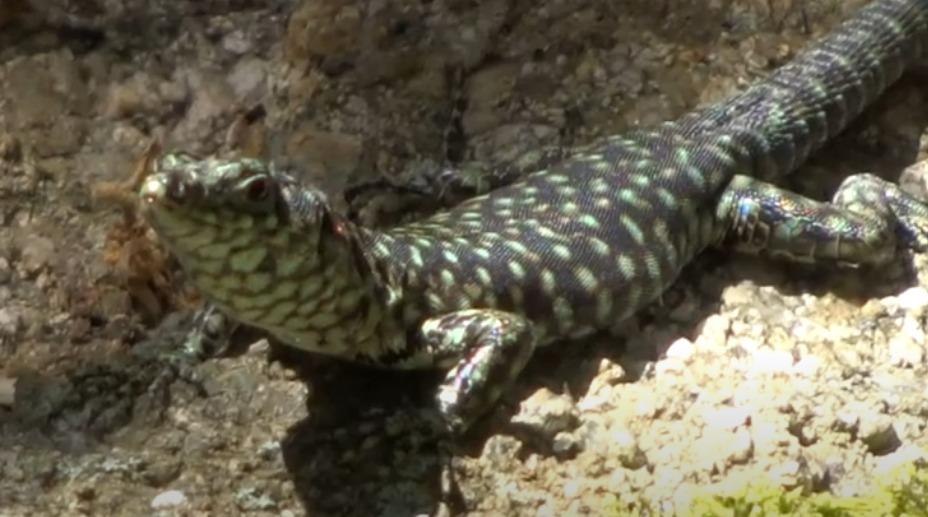Bedriaga's rock lizard
Archaeolacerta bedriagae
Lézard de Bédriaga or Lézard montagnard corse.
Only found on the islands Corsica and Sardinia - Status Near Threatened
The
Bédriaga lizard appears flat and has a long, slender shape. They
have a pointed nose and very robust limbs with which they easily
climb vertical surfaces. Their scales are smooth (not keeled) and
glued to the body. Their tail is up to twice as long as their body
and they are easily recognized by their tapered head and pointed
nose.
Pattern and colouration can be quite variable and there seem to be little external differences between the sexes outside of mating season when adults are brownish-grey with a dark, fine-lined net pattern on their backs.
Females are browner than males and the males in mating season aquire a blue belly, blue loins and blue dots on the flanks. The netlike pattern seems to turn into a pattern of white dots. Juveniles are discernible by their bright azure blue tails.
Adult
males can grow to a total length (including tail) of up to 30 cm
They occupy a range of habitats from sea level to about 1000 metres above sea level but are more abundant in the mountainous areas where they are found on rocks, cliffs and ruins. They are good swimmers and diet consists of insects and their larvae.
Depending
on the altitude, mating occurs from April to June. The female lays 3
to 6 eggs usually in July. Incubation lasts 8-9 weeks. The young that
are born from July to September are 5 to 6.5 cm tall.
Winter
seasonal dormancy can be as long as 6 months at altitude.
